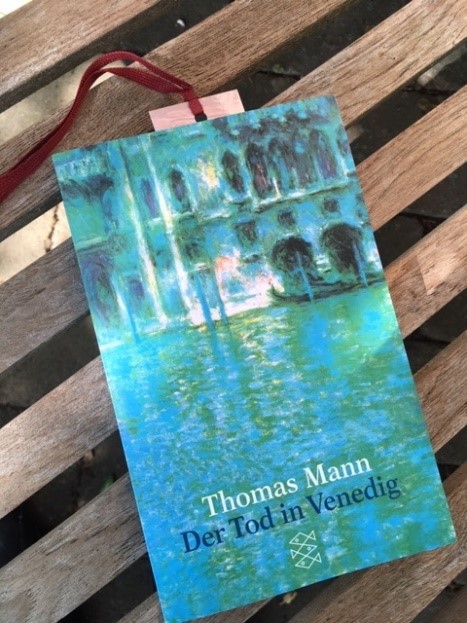“A strong tendency to spread”. Thomas Mann’s Death in Venice (1912)
By literary scholar Martina Wagner-Egelhaaf (German studies)

At the very beginning of Thomas Mann’s famous novella, the protagonist, the writer Gustav von Aschenbach, sets out “alone from his house in Prince Regent Street, Munich, for an extended walk” (Thomas Mann, Death in Venice, trans. H.T. Lowe-Porter, 3), which leads him through the English Garden and then out onto paths that are “solitary and still”. When he reaches “the North Cemetery”, he then waits “for a train to carry him back to the city” (3). The writer finds himself facing a crisis of age and creativity, which makes him seek “the open” (9). After first making the “blunder” of going to Pola (today, Pula) on the Slovenian Adriatic coast (16), he travels to Venice, where he becomes infected – not initially with cholera, though, but with love for a fourteen-year-old boy, Tadzio, who is staying with his family in the same Venetian hotel. Since this is a forbidden love, Aschenbach has to keep his distance. Distance, though, sharpens his perception, his desire, and his suffering. The spaces in which the imaginary game of exchanging glances takes place are the hotel and the beach, conventionalized and delimited spaces, spaces where longing unfolds. It is this precarious situation, one that seems to allow the protagonist no escape, that witnesses the outbreak of cholera:
For the past several years Asiatic cholera had shown a strong tendency to spread. Its source was the hot, moist swamps of the delta of the Ganges, where it bred in the mephitic air of that primeval island-jungle, among whose bamboo thickets the tiger crouches, where life of every sort flourishes in rankest abundance, and only man avoids the spot. Thence the pestilence had spread throughout Hindustan, ranging with great violence; moved eastward to China, westward to Afghanistan and Persia; following the great caravan routes, it brought terror to Astrakhan, terror to Moscow. Even while Europe trembled lest the spectre be seen striding westward across country, it was carried by sea from Syrian ports and appeared simultaneously at several points on the Mediterranean littoral; raised its head in Toulon and Malaga, Palermo and Naples, and soon got a firm hold in Calabria and Apulia. Northern Italy had been spared – so far. But in May the horrible vibrios were found on the same day in two bodies: the emaciated, blackened corpses of a bargee and a woman who kept a greengrocer’s shop (67).
The tourists leave, and the city begins to empty. Since the object of his desire, Tadzio, is staying in Venice with his family, Aschenbach remains tied to the city, and the labyrinth of Venetian streets becomes for him the spatial scene of his double (and fatal) infection: “One afternoon he pursued his charmer deep into the stricken city’s huddled heart. The labyrinthine little streets, squares, canals, and bridges, each one so like the next, at length quite made him lose his bearings” (74-75). Only the moment of death, which Luchino Visconti stages wonderfully in his 1971 film adaptation, opens the sultry, crowded space again to the open sea and sky ...
Literature creates space to depict epidemic events. However, epidemics and diseases in literary texts are often a medium for other things, too: the Nazi occupation in the case of Camus’ The Plague; an ageing writer’s desire for love and art in the case of Thomas Mann.

